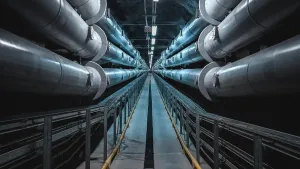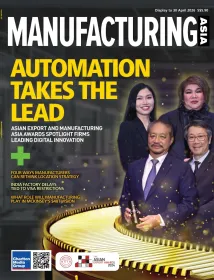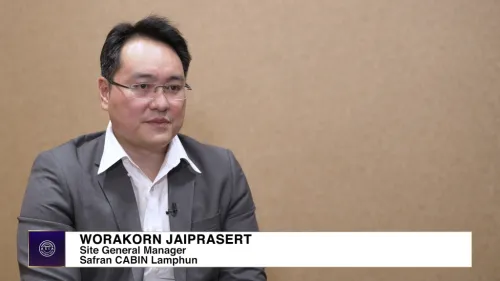Environmental sustainability: The way forward for biopharma business resilience
By Firman GhouzeBiologics are becoming an increasingly important treatment method for conditions such as cancer, autoimmune disorders and viral infections.
The global market for biologic therapeutics is set to reach 421.8 billion USD by 2025[1]. For 25% of the world’s R&D companies headquartered in Asia Pacific, this trend has implications in terms of impact on resources, supply chain and the environment[2].
How can the biopharma industry meet demand amidst resource and production constraints?
To address this challenge, manufacturers would need to view business and environmental sustainability goals as complementary. Three key areas that biopharma manufacturers can focus on, which this piece will explore in detail are:
- Reducing Carbon Emissions
- Rethinking Logistics
- Mitigating Plastic Waste
Reducing Carbon Emissions
Carbon footprint is impacted by manufacturing activities across the value chain. According to the Centre for Climate Energy and Solutions, electricity and heat are among the greatest contributors to manmade greenhouse gas emissions, followed by transportation.[3] In addition, a 2022 study by Budzinski et al elucidated that operational changes are one of the best strategies to reduce the life-cycle environmental impact of biomanufacturing, as they can increase process efficiency and reduce delivery time.[4]
Energy consumption is inevitable for biopharma companies looking to expand production in response to rising demand for therapeutics. Taking steps towards switching to renewable energy sources onsite is the sustainable way forward for the industry. Ideally, biopharma companies would be able to invest in renewable energy sources such as solar panels to power their operations, but this may not be feasible for all players due to land constraints and high cost.
Instead, the industry could start with a process improvement approach by using data to identify issue areas and solutions. Tracking energy consumption data of a manufacturing facility for example, can reveal which equipment or areas of production are more energy intensive and by adopting the Lean Six Sigma method to understand consumption patterns of energy-inefficient equipment, it is possible to make necessary enhancements to operations and set-up for a more optimal energy performance.

Singapore HyClone Plant
Rethinking Logistics
After energy, shipping is the next major contributor to carbon emissions[5] and addressing its impact is a challenge beyond just the biopharma industry. Efforts are ongoing globally to map out a blueprint for zero emissions shipping, involving researchers and private industry players but it may be a while before a roadmap is in place. In the meantime, to drive carbon emissions reductions and save money, leaders can explore three ways to rethink logistics: shorten routes, change up transportation mode and optimize packaging materials. The largest impact area will usually involve mode - how you get the product to the customer.
As far as possible, the preferred mode of shipping should be via sea, rail or ground transport, as opposed to via air, the largest carbon emitter in the transportation industry. For this to happen, logistics teams need to work closely with customers to plan shipments ahead of time for better route-planning and reduced dependence on air shipments. As an example, Cytiva has collaborated with customers to change three shipping lanes within the Asia Pacific region leading to the reduction of carbon dioxide emissions by 600 tons with cost savings of USD 600 000.
Another option is to optimize the size of the packaging to fit the product size. Frequently, packaging contains void-fill and that increases the overall package size. Larger packages drive more shipments as they take up more space on vehicles. If a company can reduce the size of their shipments, they will reduce their transportation carbon emissions.
It is worthwhile noting that in response to COVID, there has been a shift in manufacturing in-region for regional customers instead of global manufacturing shipped long distances around the world.

Cytiva Singapore HyClone Plant
Mitigating Plastic Waste
Companies are becoming increasingly scrutinized for the impact of plastic waste on natural ecosystems. Management of hazardous waste arising from the production process is a key industry-specific issue, as government regulations in most Asia Pacific countries stipulate the incineration of pharmaceutical waste, which is harmful for the environment. Instead, industry players should challenge their use of plastic in product design, in packaging, and innovate to reduce the use of plastics overall.
Due to the nature of therapeutic products, product quality and safety across the value chain are critical - from the manufacturing process to supply chain. The adoption of single-use plastics is becoming widespread in the production stage among 80% of biopharmaceutical developers[6] due to its efficiency, speed, and flexibility in R&D and manufacturing.
It is therefore especially important for biopharmas to proactively take stock of the amount and type of plastic generated and lessen its environmental impact by applying the principles of reduce, reuse and recycle. Leaders can explore several options -- source recycled or virgin plastic to build products, explore whether a product can be made with less plastic overall.
Manufacturing sites can explore all viable options for recycling to convert plastic products or waste into both higher and lower value items, in partnership with companies that specialize in this. For instance, Cytiva works with Triumvirate in the United States, an environmental solutions firm to collect their own plastic film waste and turn it into material for use in industrial applications such as composite decking, shipping pallets and compression molding products. We are exploring similar options in Asia Pacific.
Going forward, switch from plastic packaging to sustainable alternatives in distribution to meet sustainability objectives. Leveraging sensors, microchips, and smart packaging technology not only serves to track and secure shipments but also provide information such as temperature, which can help determine disposal or reusability of packaging material[7].
Lastly, explore product end-of-life. Leaders can explore remanufacturing to extend product life or if the product is recyclable. For example, Cytiva is collaborating with TerraCycle and customers both to recycle filtration devices in nine countries so far. This program prevents plastic waste from going to landfill or incineration and converts plastic into other products. This is a win for customers, manufacturers and recyclers.
While it may take time for longer-term sustainable solutions to emerge to tackle biopharma’s environmental challenges due to regulatory considerations and technology readiness, manufacturers can already start to make certain key changes. Reducing plastic and packaging material by sourcing for alternatives and effectively recycling plastic waste is an important first step, followed by an evaluation of energy consumption and exploring energy efficient alternatives. Sustainability initiatives are crucial for both business as well as environmental priorities and biopharma can start to make that difference.
[2] Calculated from page 20 of https://pharmaintelligence.informa.com/~/media/informa-shop-window/pharma/2021/pharmaprojects_jp/pharma-rd-annual-review-2022_lr_rvsd_en_final.pdf
[3] https://www.c2es.org/content/international-emissions/
[4] “Streamlined life cycle assessment of single use technologies in biopharmaceutical manufacture.”
https://www.sciencedirect.com/science/article/pii/S1871678422000024
[7] https://www.sealedair.com/resources/market-trends-topics/what-is-smart-packaging
















